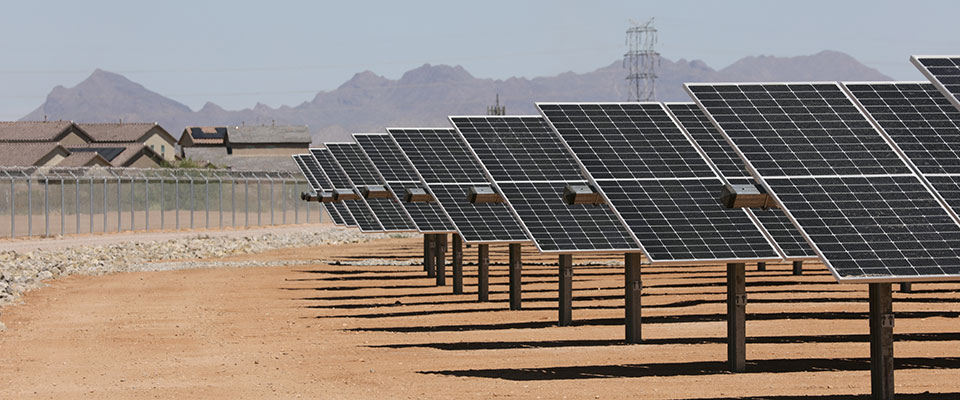
Raptor Ridge
Solar | Tucson
Our efficient 12.5 megawatt (MW) Raptor Ridge system has been generating clean energy for homeowners and renters participating in our TEP GoSolar Home program since June 2022.
The array, which features more than 35,000 photovoltaic modules installed on 100 acres near Valencia Road east of Interstate 10, is designed to produce enough power to meet the annual electric needs of about 2,500 homes.
The solar panels are mounted on a single-axis tracking system that follows the sun from east to west throughout the day. This allows the solar panels to continually face the sun, producing more energy than stationary panels like those used for rooftop solar installations. Following the movement of the sun throughout the day increases energy production, especially in the afternoon hours when customers’ energy needs are greatest.
To demonstrate how it works, the site will feature an interactive display, allowing visitors to optimize solar energy production by adjusting the angle of a small, metered solar array.
Raptor Ridge is the first TEP solar array to feature bi-facial solar modules that capture solar energy reflected off the ground onto the back of each panel, increasing energy production by up to 30 percent compared to mono-facial solar modules.
Our collaboration with the University of Arizona to protect local raptors inspired our system’s name. We work with local wildlife experts to protect birds of prey from electrical hazards by installing insulating equipment on utility poles near known nesting sites, a practice that is standard on all new distribution projects.
Our site also features electric vehicle charging and solar panel-covered parking.
Raptor Ridge and other large, community-scale renewable systems are part of a cleaner energy portfolio that are helping TEP work toward eliminating carbon emissions as soon as we can. Our large-scale wind and solar resources are producing enough energy to power about 260,000 homes in our community every year, helping advance our plans to reduce carbon emissions 80 percent by 2035.
